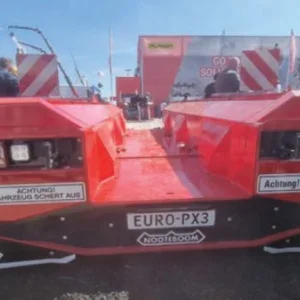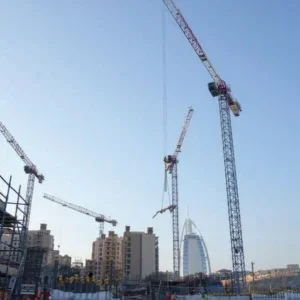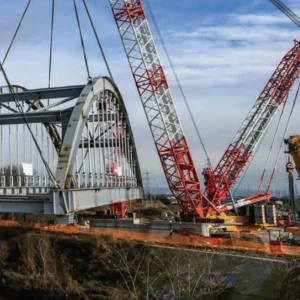Lifting jobs on rooftops in crowded cities can be unsuitable applications for long boom mobile cranes. This is particularly true for work on existing buildings and if the crane is required for anything more than a few hours – it costs too much money and blocking the street below for weeks at a time is unlikely to be a viable proposition. At the other extreme is a tower crane but the job might not take long enough to justify its erection and a permit might not be available anyway.
A solution for this ‘in between a mobile crane and a tower crane’ application can be the so-called portable crane. Compactness, portability and convenience are primary features. One option is the Herkules, built by STC ScanTech in Thailand, which has worldwide distribution. The other option is what used to be the Lasco portable crane. This is now part of the Potain product line since the French manufacturer bought the rights from the Australian developer of the crane, Ron Laczko.
The Potain PC 10-6T portable crane, adapted from Laczko’s original product, has been in the Potain range, in a standard version and with Hetronic remote control, since the end of April this year. The PC 10-6T has now proved itself on projects in Paris, one of which was on the roof of the Conservatoire de Musique for contractor Almabat. Having a crane on the road or on the pavement for the three week duration of the project was not allowed. A derrick was tested but its single speed electric motor was considered insufficiently accurate for the job and there was concern for worker safety.
A mobile crane was still needed on the project however, albeit for less than four hours, to assemble the PC 10-6T on top of the five-storey building. Where a mobile crane cannot be used the portable crane can be dismantled to be moved in a lift (elevator) in components each weighing less than 250kg.
The job on the roof of the Conservatoire was to install three fire proof exhaust chimney pipes in pre-cast sections, each 2.7m long and weighing 200kg. Precision placement was critical because of the fragility of the circular casing that the pieces had to fit into, and because workers were suspended inside the confined space. The hydraulic mechanism of the PC 10-6T allowed fine movement control for placement of the sections.
Also in Paris, a PC 10-6T was used on a project to renovate old workshops near La Defense. Steelwork company CCS International had to replace the 48m by 15m roof of the four-storey building. The existing roof and its steel structure had to be replaced from the top floor while the offices on the floors below remained occupied.
A mobile crane was too expensive for the duration of the project and a permit was unavailable to erect a tower crane, according to Potain. The PC 10-6T was erected in less than four hours on the slab of the building’s third floor using a mobile crane. To move the crane around the job area in the roof space, CCS International constructed a 5m steel platform from H-section beams. This platform moved on a rail track that was positioned on steel plates located on top of the second floor support columns. A 6m section of roof was opened to get the crane and materials in. The PC 10-6T operated up to its maximum boom length of 10.34m and loads varied between a few hundred kilogrammes and 3t.






